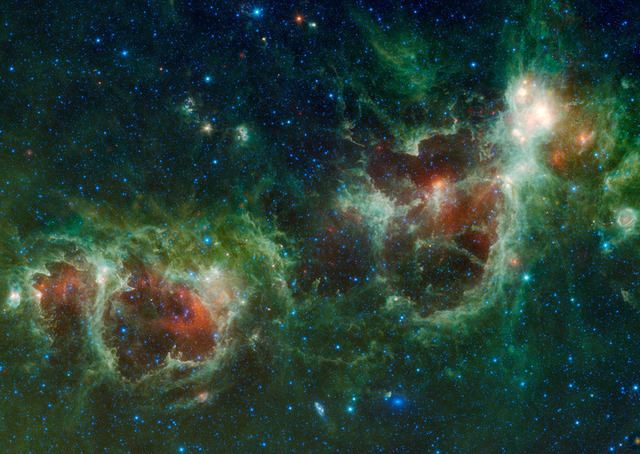Our view of the Universe just grew quite a bit more detailed as NASA JPL released the compendium of results from the Wide-field Infrared Survey Explorer orbital telescope. WISE was launched into a 525 km orbit on December 14, 2009 and gathered data until the WISE team ran out of funding on February 17, 2011.
With hardware over 1,000 times more sensitive than prior infrared space surveys, WISE surveyed 99 percent of the sky at 4 different wavelengths. Over 15 terabytes of data and 2.7 million images revealed 560 million stars, galaxies, comets, asteroids, and various other objects too cool or red-shifted to show up in anything but the infrared. Astronomers saw Y-dwarfs for the first time, which are white dwarf stars that have become nearly invisible as they cooled. The first Earth trojan asteroid also revealed itself to WISE—it scouts Earth’s orbit 60 degrees ahead of us around the Sun.
Our view of the solar system also grew quite a bit more detailed, as WISE identified or confirmed over 90 precent of the Near Earth Asteroids. One thing WISE was not able to do was see very much in the Kuiper belt; that task and many others remain for the James Webb Space Telescope now scheduled to be launched in 2018. The JWST will be several times more sensitive yet.
Berkeley University has published many WISE images as they become available, and Cal Tech hosts JPL’s WISE website.
Read the comments on this post
Read this article:
The sky just swelled to contain over 560 million objects from the new WISE mission catalog





